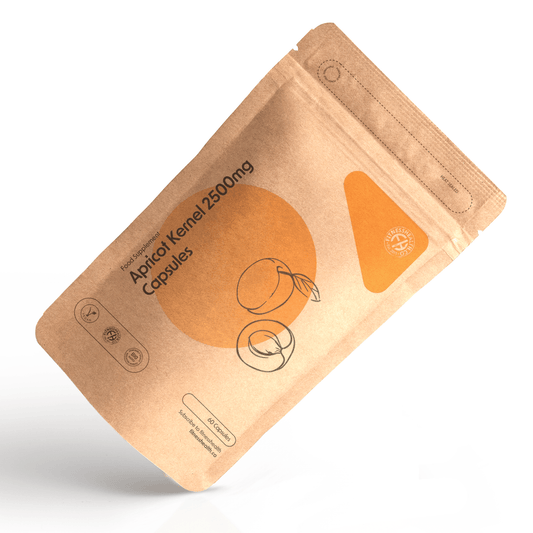Dextrose is a simple sugar that is chemically identical to glucose, which is a primary source of energy for the body. It is derived from corn and is commonly used in food and medical applications. In the context of sports and health, dextrose is often used for its quick energy-releasing properties.

Here's how dextrose is used in sports and health:
Energy Source
Dextrose is a carbohydrate that can be rapidly absorbed by the body, leading to a quick increase in blood sugar levels. This makes it an ideal source of immediate energy, especially during intense physical activities or sports.
Post-Exercise Recovery
After intense physical activity, the body's glycogen stores (the stored form of glucose in muscles and liver) may be depleted. Consuming dextrose after exercise helps replenish glycogen stores and promotes faster recovery.
Electrolyte Balance
Dextrose is often combined with electrolytes in sports drinks to help maintain proper fluid balance and prevent dehydration during prolonged exercise.
Hypoglycemia
Treatment:n the medical field, dextrose is used intravenously to treat hypoglycemia (low blood sugar). This is often done in emergency situations or for individuals who cannot consume carbohydrates orally.
Carbohydrate Loading
Some athletes use dextrose as part of a carbohydrate-loading strategy before endurance events. Carbohydrate loading involves increasing glycogen stores to enhance endurance performance.
Quick Recovery in Medical Settings
Dextrose solutions are used in medical settings to provide quick energy to patients who are unable to eat or drink, such as those recovering from surgery.
Whats the difference between dextrose and sugar
Dextrose and common table sugar, or sucrose, differ in their chemical composition and how the body processes them. Dextrose is a monosaccharide, a simple sugar composed of one glucose molecule, which is rapidly absorbed into the bloodstream, providing a quick source of energy. In contrast, table sugar is a disaccharide composed of equal parts glucose and fructose. Before the body can utilize the energy from table sugar, it must first break down the sucrose into its individual components through digestion. This process takes more time compared to the quick absorption of dextrose. Additionally, while dextrose is often used for its rapid energy release, excessive consumption of table sugar has been associated with health concerns like obesity and insulin resistance. In summary, dextrose is a simpler, quickly absorbable form of sugar, while table sugar requires additional digestion and has different metabolic implications.

What can foods can you mix dextrose with?
Dextrose, being a simple sugar, can be easily incorporated into various foods and beverages to provide a quick source of energy. Here are some ideas on foods you can mix dextrose with:
- Sports Drinks:Dextrose is commonly used in homemade or commercially available sports drinks to replenish glycogen levels during or after exercise.
- Smoothies: Add dextrose to your post-workout smoothies for a quick energy boost and to replenish glycogen stores.
- Protein Shakes: Combining dextrose with a protein source in shakes is a popular choice for post-exercise recovery, as it helps restore both energy and protein levels.
- Fruit Juices: Mix dextrose into fruit juices for a natural sweetener and an extra energy kick. This is particularly useful if you need a quick energy boost.
- Baked Goods: Incorporate dextrose into recipes for baked goods like energy bars, cookies, or muffins to enhance their carbohydrate content.
- Oatmeal or Cereal: Sprinkle dextrose on oatmeal or cereal for added sweetness and a quick source of carbohydrates.
- Yogurt: Mix dextrose into yogurt to create a sweet and energy-rich snack, especially useful after exercise.
- Homemade Energy Gels: Athletes often mix dextrose with water and other ingredients to create their own energy gels for quick fuel during endurance activities.
Can you cook with dextrose ?
Yes, you can cook with dextrose. Dextrose, being a form of glucose or simple sugar, can be used in various cooking and baking applications. Here are some ways you can incorporate dextrose into your culinary endeavors:
Baking: Dextrose can be used as a sweetener in baking recipes, similar to how you might use regular sugar. It can be particularly useful in recipes where a quick and complete dissolution of sugar is desirable.
Homemade Energy Bars: If you enjoy making your own energy bars or protein bars, dextrose can be added to the mix for a quick source of carbohydrates and sweetness.
Beverages: Dissolve dextrose in hot or cold beverages like tea, coffee, or even homemade sports drinks to add sweetness and a rapid source of energy.
Homemade Jams and Jellies: Dextrose can be used in place of traditional sugar when making homemade jams and jellies.
Candies and Confections: Use dextrose in the preparation of candies and confections, especially those that require a smoother texture or quicker dissolving properties.
Sauces and Dressings: Incorporate dextrose into homemade sauces and dressings for a touch of sweetness. It dissolves easily and can be a good option for achieving a smoother consistency.

When incorporating dextrose into your diet, it's crucial to think about your unique dietary requirements and objectives. While it can offer a swift energy boost, it's pivotal to exercise moderation, and seeking advice from a healthcare or nutrition expert is advisable, especially for those dealing with diabetes or other health issues. Moreover, striking a balance by combining dextrose with sources of protein and fiber can help regulate its rapid energy release. It's worth emphasizing that the benefits of dextrose should be tailored to individual needs, activity levels, and health conditions. Overconsumption of simple sugars, including dextrose, may contribute to problems like weight gain and insulin resistance, underscoring the importance of moderation. Anyone with diabetes or other health considerations should seek guidance from healthcare professionals before introducing dextrose into their dietary or supplementation routine.










